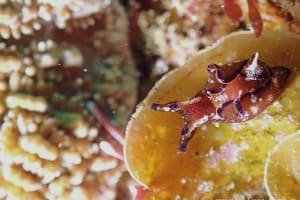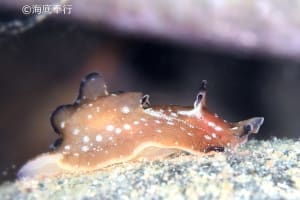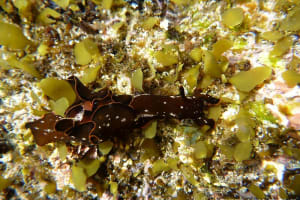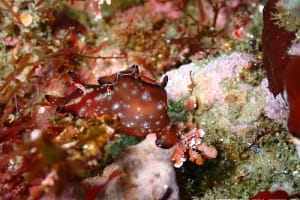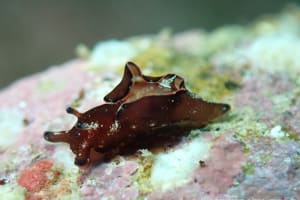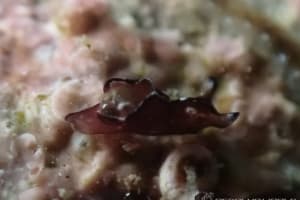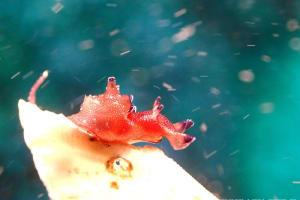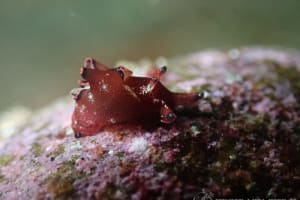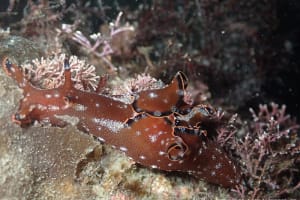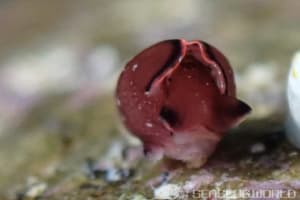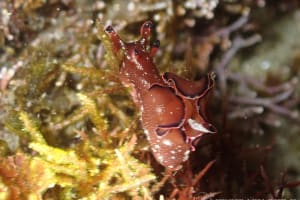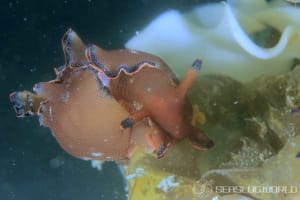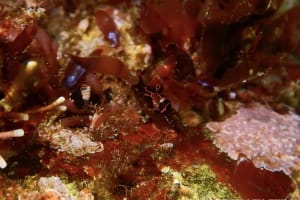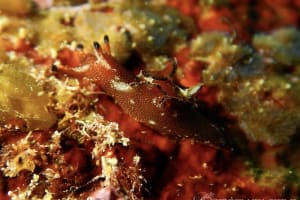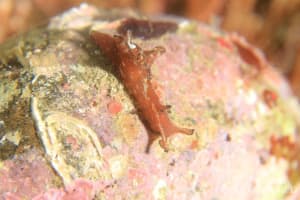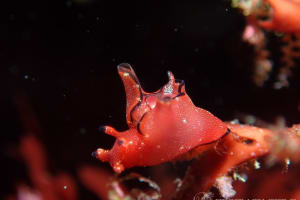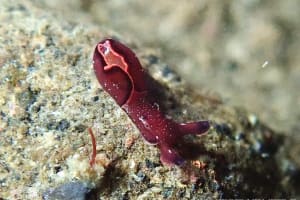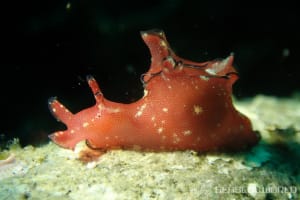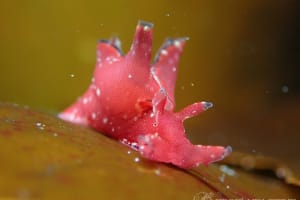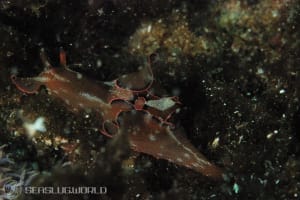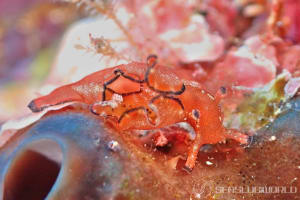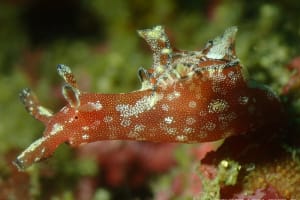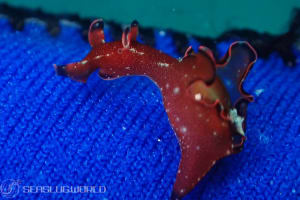External anatomy
Animal elongate, wider in visceral region, narrowing gradually towards head and tail; visceral hump proportionally very large, elongate, well differentiated from rest of body, occupying more than 1/3 of body length; mantle foramen large, oval, on posterior left side of visceral hump, not elevated; parapodia broad, fused posteriorly, typically joined anteriorly, forming several folds; rhinophores and oral tentacles relatively short, enrolled, with small projections in oral tentacles; siphon wide, relatively short, protruding slightly above parapodia. Colour reddish to brown, with white dots aggregated in clusters; parapodia edged in red, with a broad submarginal black band, often with white dots; rhinophores and oral tentacles tips red with submarginal black area dotted in white; mantle foramen with dark inner edge.
DISTRIBUTION
Japan and Korea

References
- くろへりあめふらし(新稱), 内田清之助ほか. (1927). 日本動物圖鑑
- クロヘリアメフラシ, 生物學御研究所編. (1949). 相模湾産後鰓類図譜.
- Aplysia parvula Morch Kuroheri-amefurashi, Baba, K. 1957. A revised list of the species of Opisthobranchia from the northern part of Japan, with some additional descriptions. J. Fac. Sci., Hokkaido Univ.,ser. 6, Zool. 13(1-4):8-14.
- クロヘリアメフラシ, 高岡高等学校生物研究会(編). (1964). 富山湾産後鰓類図譜.
- クロヘリアメフラシ, 益田一. (1999). 海洋生物ガイドブック.
- クロヘリアメフラシ, 益田 一. (2004). 海洋生物ガイドブック. 第7刷.
- クロヘリアメフラシ, 中野 理枝. (2018). 日本のウミウシ.
- Golestani, H.; Crocetta, F.; Padula, V.; Camacho, Y.; Langeneck, J.; Poursanidis, D.; Pola, M.; Yokeş, M. B.; Cervera, J. L.; Jung, D.-W.; Gosliner, T. M.; Araya, J. F.; Hooker, J.; Schrödl, M.; Valdés, Á. (2019). The little Aplysia is coming of age: from one species to a complex of species complexes in Aplysia parvula (Mollusca: Gastropoda: Heterobranchia). Zoological Journal of the Linnean Society.

DS.ウミウシハンターズ 池田雄吾 城ヶ島水域のウミウシ


